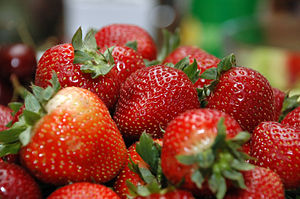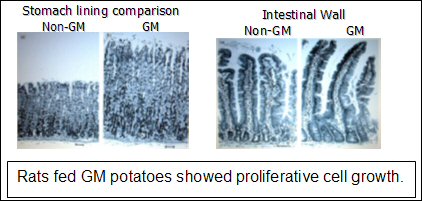In Part 1 I discussed what to eat if you have Parkinson’s Disease. PD is only partially genetic and can be induced by exposure to pesticides, herbicides and other chemicals, some of which are found in food.
This is what to avoid:
-

Sugar Dish (Photo credit: Steve Snodgrass) Aspartame, Neotame, Nutrasweet, Sugar Twin, Equal, or Spoonful which degrade to neurotoxins when exposed to heat over 86°F or 30°C (and they don’t ship soft drinks in refrigerated trucks.) At that temperature aspartame breaks down to aspartic acid and phenylalanine and a small amount of methanol (wood alcohol) – which degrades to formaldehyde. There is some evidence that reaction to the sweeteners results in diagnoses, or misdiagnoses of Parkinson’s or MS and anecdotal evidence of at least some people reverting to normal after removing it. In any event you don’t want to add neurotoxins to your PD as they may be part of the cause. Also look at dental and pharmaceutical supplies that may contain the sweeteners.
- Sucralose is probably more heat stable than aspartame, but I would avoid it as well as saccharine (Sweet n Low) on general health principles. Instead use stevia, lo han guo or 100% fruit juice (in moderation). Water of course is best, but if you want some taste try inserting a spear of watermelon and a sprig of mint, or cut up citrus fruit into your jug. For electrolytes I often squeeze 10 drops of Trace Mineral Concentrate into a day’s dose as well and that also helps provide micronutrients needed for enzymatic activities in the brain and body.
- Sugar. Scientists believe that dementia in Parkinson’s disease occurs as a result of a defect in how the brain metabolizes glucose, or blood sugar. Chronically high blood sugar levels may also be involved in the onset of Parkinson’s disease. One role of the insulin in the brain is to regulate dopamine. When the brain’s insulin receptors become defective, insulin cannot regulate the system which inhibits the secretion of dopamine.
- Food sprayed with pesticides, herbicides or fungicides. These are quite often neurotoxic or endocrine disruptors and can be problematic in PD
- Round-up ready anything. This line of genetically modified organisms (GMOs) are engineered with pesticides in every cell and have been linked to problems in animals including including infertility, immune problems, accelerated aging, faulty insulin regulation, and changes in major organs and the gastrointestinal system. The Institute for Responsible Technology says:
There are eight GM food crops. The five major varieties—soy, corn, canola, cotton, and sugar beets—have bacterial genes inserted, which allow the plants to survive an otherwise deadly dose of weed killer. Farmers use considerably more herbicides on these GM crops and so the food has higher herbicide residues. About 68% of GM crops are herbicide tolerant.The second GM trait is a built-in pesticide [Round-up], found in GM corn and cotton. A gene from the soil bacterium called Bt (for Bacillus thuringiensis) is inserted into the plant’s DNA, where it secretes the insect-killing Bt-toxin in every cell. About 19% of GM crops produce their own pesticide. Another 13% produce a pesticide and are herbicide tolerant…
The biotech industry claims that Bt-toxin is harmless to humans and mammals because the natural bacteria version has been used as a spray by farmers for years. In reality, hundreds of people exposed to Bt spray had allergic-type symptoms,[12] and mice fed Bt had powerful immune responses[13] and damaged intestines.[14] Moreover, the Bt in GM crops is designed to be more toxic than the natural spray and is thousands of times more concentrated.
- Rats fed GM potatoes had smaller, partially atrophied livers.[24]
- The livers of rats fed GM canola were 12-16% heavier.[25]
- GM soy altered mouse liver cells in ways that suggest a toxic insult.[26] The changes reversed after they switched to non-GM soy.[27]
- More than half the babies of mother rats fed GM soy died within three weeks.[28]
- Male rats[29] and mice[30] fed GM soy had changed testicles, including altered young sperm cells in the mice.
- Thousands of sheep, buffalo, and goats in India died after grazing on Bt cotton plants after harvest. Others suffered poor health and reproductive problems.[34]
- Farmers in Europe and Asia say that cows, water buffaloes, chickens, and horses died from eating Bt corn varieties.[35]
- About two dozen US farmers report that Bt corn varieties caused widespread sterility in pigs or cows.[36]
- Filipinos in at least five villages fell sick when a nearby Bt corn variety was pollinating.[37]
- The stomach lining of rats fed GM potatoes showed excessive cell growth, a condition that may lead to cancer. Rats also had damaged organs and immune systems.[38]
- You can avoid major exposure to these by growing your own or purchasing organic foods, which are best for persons with Parkinson’s. If you can’t, look for the Clean 15 foods which tend to have inedible skin or are naturally resistant to pests: onions, non-GMO sweet corn, avocados, pineapple, mango, asparagus, kiwi, cabbage, eggplant, watermelon, papaya, sweet onions, grapefruit, and sweet potato. Always wash by first dipping into a solution of water and pure soap, then rinse with water alone as was done for the Clean 15 and Dirty Dozen lists.
- To reduce pesticide exposure by 80% avoid or get organic versions of the Dirty Dozen high-pesticide foods defined by the Environmental Working Group :
The fruits and vegetables on “The Dirty Dozen” list, when conventionally grown, tested positive for at least 47 different chemicals, with some testing positive for as many as 67. For produce on the “dirty” list, you should definitely go organic — unless you relish the idea of consuming a chemical cocktail. “The Dirty Dozen” list includes: celery, peaches, strawberries, apples, blueberries, nectarines, sweet bell peppers. spinach, kale and collard greens, cherries, potatoes, imported grapes, lettuce
-

A bowl of Strawberries. Strawberries depend on pesticides and fungicides to ship from across the country. (Photo credit: Wikipedia) Meat that is conventionally raised is much worse than conventionally raised fruits and vegetables because it concentrates the toxins of the food it eats in fat. So if your organic dollar is limited, use it for any meat and dairy that you consume. Chicken is especially problematic. You want grass-fed, pastured meat and chickens raised mostly outdoors.
- Avoid most farmed fish or fish not approved by Seafood Watch which monitors for mercury or heavy metals. The lists are regional but avoid Chinese farmed shellfish especially. Smaller fish are generally better than larger fish higher up the food chain. There is a free downloadable ap on the Seafood Watch site which will help for grocery shopping or dining out.
- Seed oils in cooking which tend to go rancid with cooking heat. This includes oils in processed foods or restaurants. Cook with saturated coconut oil which doesn’t degrade with heat and use fragile Extra Virgin Olive Oil for salads.
- Hydrogenated oils, partially hydrogenated oils, trans fats, margarine or rancid fats and oils. Your brain is mostly fat. Give it good fats and cold pressed oils.
- Don’t eat fava beans unless you regulate your medicines to regularly include them in your diet. Fava beans can increase L-doppa levels and that could result in too much.
- Avoid excitotoxins like MSG which may agitate your brain increasing tremors.
- Too low a salt level can cause hyponaturemia. As PD progresses, muscles spasm and it becomes hard to drink. Medications can also deplete salt and mineral levels. Use a full-spectrum mineral salt like Himalayan salt or grey Celtic sea salt.
- Anti-nutrients like high levels of oxalates in rhubarb or spinach and phytates in unfermented beans.
- Junk food which has low levels of nutrients in the first place. You need antioxidants, minerals and fiber to detoxify. Processed food gives you very little of any and is a prime source of GMO foods, excitotoxins like MSG, chemical stabilizers and fillers.
- Gluten, soy, dairy or any other allergenic food one may be sensitive to. Allergens produce inflammation and inflammation can drive Parkinson’s. This needs to be individualized and the best way to test is to write down and rate your symptoms then go off a suspect food 100% for a month and rate the symptoms again.



